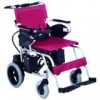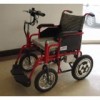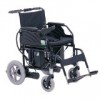科学家对一名嗜眠病患者进行监控。(图片提供:Donna E. Natale Planas/Miami Herald/MCT/Newscom)
数百万遭受嗜眠病折磨的人恐怕应该责怪他们的免疫系统。研究人员将这种睡眠障碍与两种免疫系统基因联系在一起,也就是说这可能是一种自身免疫性疾病。这一发现有望最终改进嗜眠病的治疗方法。
每2000人中便有1人罹患嗜眠病,这也使得它和多发性硬化一样常见。这种疾病包含有一系列奇怪的症状,例如白天产生无法抵抗的睡意,不由自主的麻痹,以及猝倒——在剧烈的情绪暴发后(例如大笑)突然丧失对肌肉的控制。嗜眠病患者依赖于兴奋剂和睡眠抑制药物的混合制剂来控制疾病的发作,但是目前尚难治愈这一顽症。
20多年来,美国加利福尼亚州帕洛阿尔托市斯坦福大学医学院的睡眠学者Emmanuel Mignot一直在从事嗜眠病的研究。上世纪90年代末期,他的研究团队发现嗜眠病患者体内缺乏增食欲素——由一些大脑细胞产生的激素,能够帮助人和动物保持清醒。在嗜眠病患者体内,合成这种激素的机制是健全的,但却缺少相关的细胞,这意味着有某种因素在破坏这些细胞。
嗜眠病同时还可能具有一种人体白细胞抗原(HLA)的特殊变异体。HLA通过将病原体片段呈现给免疫细胞,从而激起人体的免疫响应并与病原体斗争。大多数的自身免疫性疾病——包括多发性硬化和1型糖尿病——都与特殊的HLA有关。尽管后续的研究并没有找到有关这一免疫联系的更多证据,但这个巧合使得Mignot和其他许多睡眠研究人员怀疑,一种自体免疫攻击摧毁了嗜眠病患者生成增食欲素的细胞。
为了验证这一假设,Mignot与斯坦福大学的遗传学家Joachim Hallmayer,以及跨越3个大陆的同行组成了研究团队。研究人员分析了将近4000名志愿者的DNA序列,所有的受试者都携带了相同的与嗜眠病相关的HLA,但是只有一半的人患上了嗜眠病。他们发现,参与这项研究的嗜眠病样本共享了另一基因的一个版本,这种基因能够提醒T细胞——摧毁入侵者的免疫细胞——如何与HLA分子携带的病原体进行反应。结果显示,T细胞和HLA——两者合作调控人体的大多数免疫响应——以一种独特的方式共同破坏嗜眠病患者的增食欲素细胞。研究小组在本周的《自然—遗传学》杂志网络版上报告了这一研究成果。
Mignot表示,这项研究并没有解释T细胞为什么会以增食欲素细胞为目标。同时也没有阐明是什么最先引发了这种攻击——这是大多数自身免疫性疾病的一个未解之谜。Mignot说:“我们并不清楚人体为什么会陷于混乱,并开始攻击自身。”但他希望未来的研究会揪出最终的罪魁祸首。与此同时,Mignot相信,搞清自体免疫的“扳机”将有助于研制有关嗜眠病的更有效的新疗法。
美国明尼苏达州罗彻斯特市梅奥诊所的神经科学家Michael Silber表示:“我们很早之前便已经知道嗜眠病可能是一种自身免疫性疾病,但是所有试图证明这一点的努力都无功而返。”Silber说,“尽管这项研究成果尚未最终证明嗜眠病便是自身免疫性疾病,但是它朝着这一方向迈出了一大步。”(生物谷Bioon.com)
生物谷推荐原始出处:
Nature Genetics 3 May 2009 | doi:10.1038/ng.372
Narcolepsy is strongly associated with the T-cell receptor alpha locus
Joachim Hallmayer1,2,32, Juliette Faraco1,2,32, Ling Lin1,2, Stephanie Hesselson3, Juliane Winkelmann4,5,6, Minae Kawashima1,2,7, Geert Mayer8,9, Giuseppe Plazzi10, Sona Nevsimalova11, Patrice Bourgin12, Sheng Seung-Chul Hong13, Yutaka Honda14, Makoto Honda14, Birgit H?gl15, William T Longstreth Jr16,17, Jacques Montplaisir18, David Kemlink11, Mali Einen1,2, Justin Chen3, Stacy L Musone3, Matthew Akana3, Taku Miyagawa7, Jubao Duan19, Alex Desautels18, Christine Erhardt12, Per Egil Hesla20, Francesca Poli10, Birgit Frauscher15, Jong-Hyun Jeong13, Sung-Pil Lee13, Thanh G N Ton16,17, Mark Kvale3, Libor Kolesar21, Marie Dobrovolná22, Gerald T Nepom23, Dan Salomon24, H-Erich Wichmann25,26, Guy A Rouleau27, Christian Gieger25, Douglas F Levinson2, Pablo V Gejman19,28, Thomas Meitinger4,6, Terry Young29, Paul Peppard29, Katsushi Tokunaga7, Pui-Yan Kwok3, Neil Risch3,30 & Emmanuel Mignot1,2,31
Narcolepsy with cataplexy, characterized by sleepiness and rapid onset into REM sleep, affects 1 in 2,000 individuals1, 2. Narcolepsy was first shown to be tightly associated with HLA-DR2 (ref. 3) and later sublocalized to DQB1*0602 (ref. 4). Following studies in dogs5 and mice6, a 95% loss of hypocretin-producing cells in postmortem hypothalami from narcoleptic individuals was reported7, 8. Using genome-wide association (GWA) in Caucasians with replication in three ethnic groups, we found association between narcolepsy and polymorphisms in the TRA@ (T-cell receptor alpha) locus, with highest significance at rs1154155 (average allelic odds ratio 1.69, genotypic odds ratios 1.94 and 2.55, P < 10-21, 1,830 cases, 2,164 controls). This is the first documented genetic involvement of the TRA@ locus, encoding the major receptor for HLA-peptide presentation, in any disease. It is still unclear how specific HLA alleles confer susceptibility to over 100 HLA-associated disorders9; thus, narcolepsy will provide new insights on how HLA–TCR interactions contribute to organ-specific autoimmune targeting and may serve as a model for over 100 other HLA-associated disorders9.







